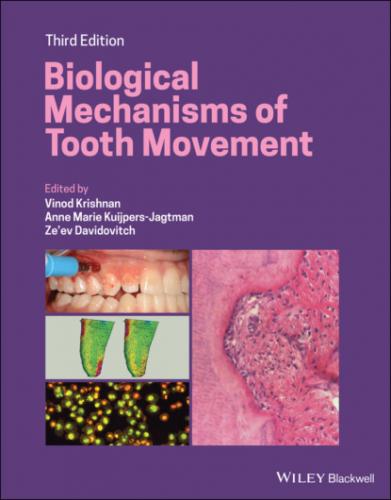Biological Mechanisms of Tooth Movement. Группа авторов
rel="nofollow" href="#ulink_32a26720-e6cb-5680-b9e8-13696cd7698d">Acknowledgement References CHAPTER 7: Mechanical Load, Sex Hormones, and Bone Modeling Introduction Osteoblast/osteocyte differentiation and function Osteocytes Osteoclast differentiation and function Sex hormones and their receptors Osteoblasts and osteocytes respond to load‐induced modeling Osteoclast response to load‐induced modeling Role of sex hormones for the osteogenic effect of loading Sex hormones and OTM Acknowledgements References CHAPTER 8: Biological Reactions to Temporary Anchorage Devices Introduction Clinical factors in the success of TADs Mechanical analysis using finite element models Histological reactions Conclusions References CHAPTER 9: Tissue Reaction to Orthodontic Force Systems. Are we in Control? Introduction Pressure–tension theory: Still valid? The influence of the material properties The influence of the morphology of the alveolar wall The influence of force level The influence of the interaction with occlusion Conclusions Where are we now? How should we continue? References
11 PART 3: Inflammation and Orthodontics CHAPTER 10: The Influence of Orthodontic Treatment on Oral Microbiology Introduction Changes in the oral microbiome with removable orthodontic appliances Changes in the oral microbiome with fixed orthodontic appliances Effects of different orthodontic bracket types on oral microbiome Changes in the oral microbiome with orthodontic retainers Importance of oral hygiene Impacted teeth, mini‐implants, orthognathic surgery and changes in oral microbiota Conclusions References CHAPTER 11: Markers of Paradental Tissue Remodeling in the Gingival Crevicular Fluid and Saliva of Orthodontic Patients Why study oral fluids? What is known about markers in oral fluids during orthodontic tooth movement? What is needed for improved diagnostic trials of markers in oral fluids during orthodontic treatment? Variables associated with the collection and analysis of GCF The future Conclusions References
12
PART 4: Personalized Diagnosis and Treatment
CHAPTER 12: Genetic Influences on Orthodontic Tooth Movement
Introduction
Tissue reactions to application of mechanical forces
Reaction of the pulp tissues
Genetic influences and translational applications
Complications of OTM and its genetic implications
Conclusions
References
CHAPTER 13: Precision Orthodontics: Limitations and Possibilities in Practice
Introduction
Progression in DNA analysis technology and its impact on clinical research and practice
Precision oral healthcare
From personalized to precision orthodontics
Support of next generation sequencing, other genetic studies, and the utility of their application in orthodontics
Education
Conclusion
References
CHAPTER 14: The Effect of Drugs, Hormones, and Diet on Orthodontic Tooth Movement
Introduction
Prostaglandins and analogues
Nonsteroidal anti‐inflammatory
